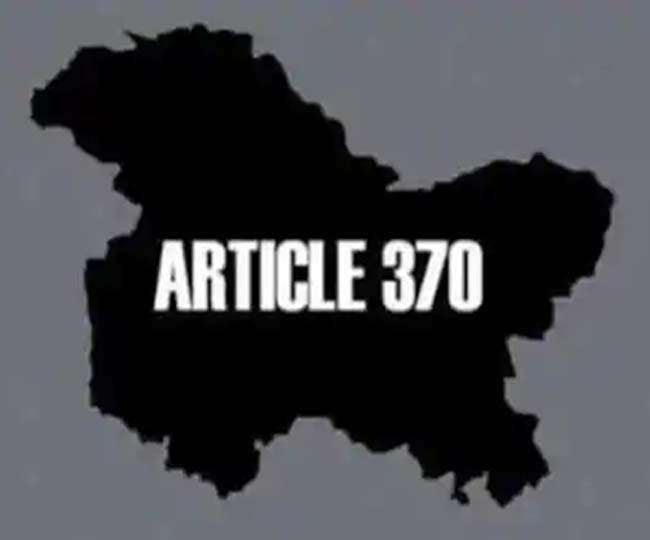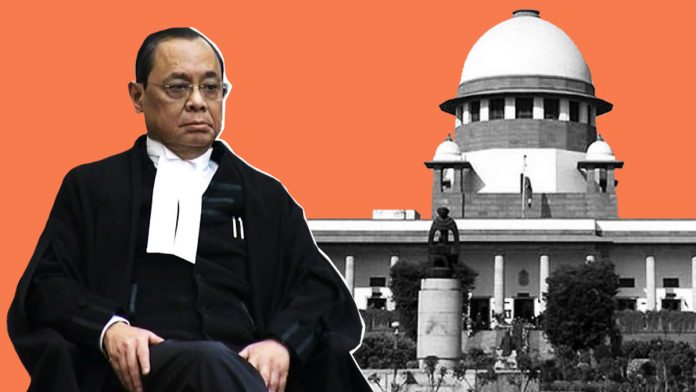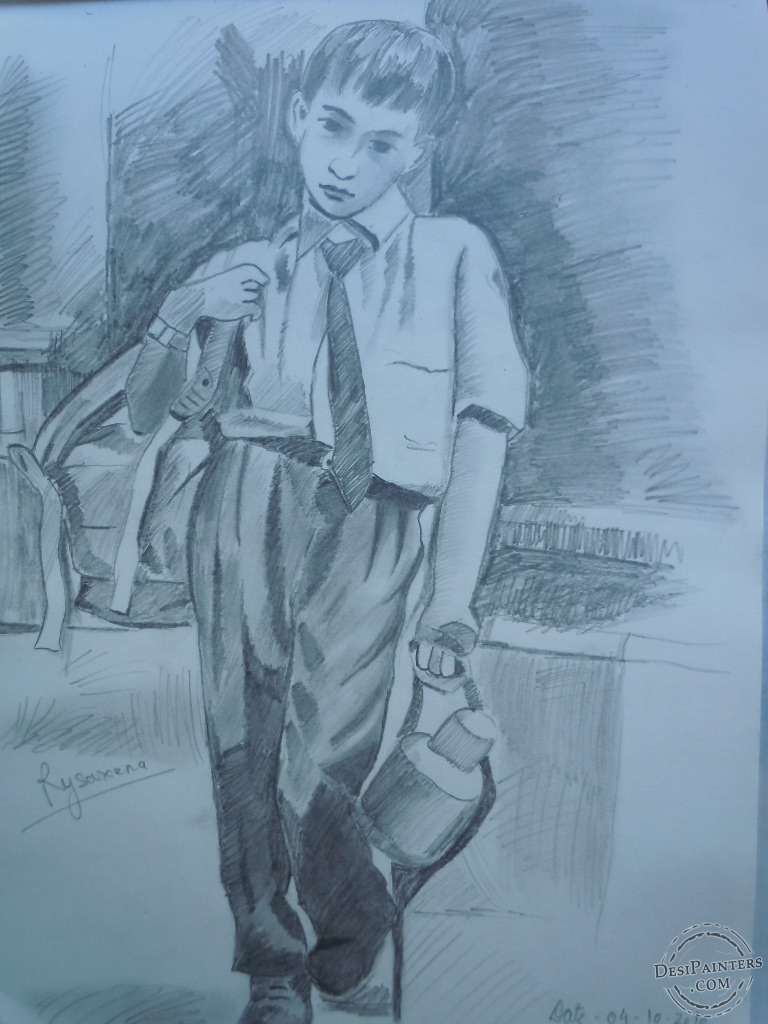 Justice Sabharwal has been accused of serious ‘judicial misconduct’ and quite an enviable amount of space has been given to it in the newspapers, it being a serious issue besides its having invited sentences for the ‘courageous’ journalists who splashed it across the front pages of a tabloid as a juicy news item. The charges are quite serious and bring higher judiciary into disrepute, which made eminent lawyers and judges to ask for enquiry to get the truth of the matter out. And Arundhati ‘Booker’ Roy found a golden chance to ‘flick the halos off saintly heads’ – or so she would like to believe. She pounced upon the once-in-a-lifetime opportunity like a predator in patient wait and promptly penned Scandal in the Palace (Outlook, October 1, 2007). The article, like most of her writing, is a wonderful piece insofar as the writing part and persuasiveness is concerned. The force in her arguments, a major part of which comes from her masterly prose, goads one into believing that she is ‘absolutely’ right.
Justice Sabharwal has been accused of serious ‘judicial misconduct’ and quite an enviable amount of space has been given to it in the newspapers, it being a serious issue besides its having invited sentences for the ‘courageous’ journalists who splashed it across the front pages of a tabloid as a juicy news item. The charges are quite serious and bring higher judiciary into disrepute, which made eminent lawyers and judges to ask for enquiry to get the truth of the matter out. And Arundhati ‘Booker’ Roy found a golden chance to ‘flick the halos off saintly heads’ – or so she would like to believe. She pounced upon the once-in-a-lifetime opportunity like a predator in patient wait and promptly penned Scandal in the Palace (Outlook, October 1, 2007). The article, like most of her writing, is a wonderful piece insofar as the writing part and persuasiveness is concerned. The force in her arguments, a major part of which comes from her masterly prose, goads one into believing that she is ‘absolutely’ right.
Doubtlessly, she wields a powerful pen capable of spewing venom at will. However, when it comes to criticizing those who do not stand on her side of the fence, she is a little overzealous. The fearless crusader in her blinds her to the inherent cracks in the word-castles she builds. She starts by telling us that Supreme Court does not only uphold the law but also ‘micromanages’ our lives. So do the legislatures, the executive and also, to a limited extent, Microsoft and Airtel. Every institution or body that is into public service commercially or otherwise has some effect on the way we lead our lives. And in that sense the ‘micromanagement’ accusation holds good against all such bodies, especially state instrumentalities engaged in lawmaking and enforcement. To support her argument she goes on:
It decides what is good for the environment and what isn’t, whether dams should be built, rivers linked, mountains moved, forests felled. It decides whether slums should be cleared, streets widened, shops sealed, whether strikes should be allowed, industries should be shut down, relocated or privatised. It decides what goes into the school textbooks, what sort of fuel should be used and schedules of fines for traffic offences. It decides what colour lights on judges’ cars should be (red) and whether they should blink or not (they should).
Good writing. But the Supreme Court does not decide what is good for the environment, the environmentalists do. The Supreme Court asks the government to take due steps to ensure that the environment is not damaged beyond repair or, in most cases, asks it enforce the already existing environmental law. And lawmaking, as Ms. Roy must surely be aware, is not apex court’s primary function, the enforcement of law is. Whether dams should be built or rivers linked is, for the most part, a policy decision, which is taken by the government. Now, if any such decision does more harm than good, the Supreme Court cannot – and ordinarily does not – intervene unless there is a violation of any of the fundamental rights or procedural or substantive law or some fundamental legal principle. That’s the reason why it refused to decide the question of dams’ desirability but did direct the government to ensure that those displaced are satisfactorily relocated. And so far as the ‘blinking red lights’ on judges’ cars are concerned, the Supreme Court would also decide (or perhaps has already decided) what light should sit on top of whose car and when should it blink. But even that is decided in accordance with the law laid down. The Supreme Court has only directed that the law be enforced. So, are the courts and judges being criticized for doing what they are supposed to do? Yes, the higher judiciary has done a little more than just meeting the ends of justice on case to case basis. It has tried its level best to make other pillars of Indian democracy take the load they are meant to shoulder. Is it what the Indian intelligentsia resents (Ms. Roy in particular)?
Ms. Roy makes a point about Public Interest Litigation:
While Public Interest Litigation gave people access to the courts, it also did the opposite. It gave courts access to people and to issues that had been outside the judiciary’s sphere of influence so far. So it could be argued that it was Public Interest Litigation that made the courts as powerful as they are. Over the last 15 years or so, through a series of significant judgments, the judiciary has dramatically enhanced the scope of its own authority.
Public Interest Litigation did not make the courts as powerful as they are, but made people more powerful by giving in their hands a tool to be used when every other endeavour fails. The people got the liberty to take such larger issues to the court that affected them as part of a larger group and not individually. So, it could as well be argued that it was the people who got ‘access to issues that had been outside their reach’. The Supreme Court has neither made itself more powerful, nor has it ‘enhanced the scope of its own authority’. It has simply ‘used’ its authority in the best manner and for the noblest purposes. Till the time PIL arrived on the scene, the Supreme Court had only used its authority to settle the questions of law on case to case basis. With the PILs it started protecting the fundamental rights of the people as a group in the manner very much consistent with the Constitution of India. The Constitution vests the Supreme Court with all the power necessary to protect the fundamental rights of the citizens and non-citizens. Simply because it did not exercise the power in a certain manner earlier does not mean that it ‘could not’ be exercised that way.
Next, she attacks the Rule of Law saying:
The Rule of Law is a phrase that derives its meaning from the context in which it operates. It depends on what the laws are and who they’re designed to protect. For instance, from the early ’90s, we have seen the systematic dismantling of laws that protect workers’ rights and the fundamental rights if ordinary people (the right to shelter/health/education/water).
That’s correct. The expression Rule of Law only means that the law in question has to be enforced to all those fall within its ambit without making any artificial distinction unless the concerned law itself provides for it. In simpler terms, a uniform application of the law is what the expression refers to. Now, if a certain piece of legislation has been enacted to promote the exclusive welfare of a certain class, it would be binding on the courts to let the law do what it seeks to do. And the laws are made by the legislature, which consists of the elected representatives of the people. So, if a group is influential enough it could pack the legislative houses with those who would further its interests by enacting favourable laws. And going by the Rule of Law, the courts would enforce the law as enacted, which could also mean furthering the interests of one class exclusively even if it puts other classes in a disadvantageous position. Therefore, the courts do not have much of a say in such matters. However, if a law fails to pass the test of reasonableness and non-arbitrariness or violates the Right to Equality, it might be declared unconstitutional by the Supreme Court. So far as ‘dismantling’ of laws is concerned, the courts have far less a say because if the legislature wishes to do away with an enactment, there is little that courts can do about it. And in a democracy, that’s how it should be.
Ms. Roy also seems to resent, like so many other people, the lack of what they call ‘judicial accountability’. It is this lack of ‘accountability’ that enables the judiciary to pronounce unpopular decisions and uphold the Rule of Law. The flip side of ‘accountability’ is populism. It is only because the judiciary is not worried about the pleasure or displeasure of anyone that it could decide important cases purely on merit. Making judiciary a democratic institution can only harm Indian democracy.
Another point that the noted writer makes is that the power to punish for its contempt “arms the judiciary with formidable, arbitrary power to silence its critics and to imprison anyone who asks uncomfortable questions”. The Supreme Court of India is known to be remarkably tolerant of criticism and has only exercised its power to punish for contempt when it was left with no other option. Yes, the highest court of the land is sometimes actually ‘forced’ to punish and Ms. Roy should be the last person asking such questions because her own contempt case is quite an illustrative one in this regard. It is quite apparent that the Arundhati Roy pushed the Supreme Court to use its contempt powers to the extent that it was left with absolutely no alternative. The best it could do was to keep the punishment as light as possible, which it did by diluting it down to a mere ‘symbolic’ sentence. Simple Imprisonment for a day, I believe, is as light as it could be in the circumstances.
 Ms. Roy seems quite appreciative of the legislative move of making truth an acceptable defence in contempt of court cases. Of course, if there is truth backing an accusation, allowing it to prevail is the thing to do. But it is not as simple and as innocuous as it sounds because ‘truth’ in this context obviously includes not just all that is true but also what is ‘perceived’ or could be ‘reasonably thought’ to be true because any other way of looking at it would defeat the very purpose of making truth a defence. It cannot be asked of an accuser or a journalist to first gather legally conclusive proof before pointing a finger. If the fellow had a genuinely strong reason to suspect that something was wrong, it should be enough for him to invoke the defence of truth successfully even if the evidence gathered after thorough investigation turns out to be utterly insufficient to prove the allegations. In such a situation, however, the proof of innocence of the judge does not change his ‘perceived’ guilt. His reputation is soiled and his integrity would remain under suspicion for the rest of his serving years, if the judge decides to continue and if he prefers to walk away, he would still be seen as someone less-than-respectable for his remaining life despite his innocence. This was precisely the reason why the defence of truth was not allowed in contempt cases. Every case that a judge decides is capable of earning him an enemy, who may also be powerful, influential and unscrupulous enough to wreak vengeance by destroying a judge’s reputation, which means destroying him as a human being. And getting away with it. So, though truth as a defence in contempt cases carries legislative seal, it would take a while before its true effect is fully revealed.
Ms. Roy seems quite appreciative of the legislative move of making truth an acceptable defence in contempt of court cases. Of course, if there is truth backing an accusation, allowing it to prevail is the thing to do. But it is not as simple and as innocuous as it sounds because ‘truth’ in this context obviously includes not just all that is true but also what is ‘perceived’ or could be ‘reasonably thought’ to be true because any other way of looking at it would defeat the very purpose of making truth a defence. It cannot be asked of an accuser or a journalist to first gather legally conclusive proof before pointing a finger. If the fellow had a genuinely strong reason to suspect that something was wrong, it should be enough for him to invoke the defence of truth successfully even if the evidence gathered after thorough investigation turns out to be utterly insufficient to prove the allegations. In such a situation, however, the proof of innocence of the judge does not change his ‘perceived’ guilt. His reputation is soiled and his integrity would remain under suspicion for the rest of his serving years, if the judge decides to continue and if he prefers to walk away, he would still be seen as someone less-than-respectable for his remaining life despite his innocence. This was precisely the reason why the defence of truth was not allowed in contempt cases. Every case that a judge decides is capable of earning him an enemy, who may also be powerful, influential and unscrupulous enough to wreak vengeance by destroying a judge’s reputation, which means destroying him as a human being. And getting away with it. So, though truth as a defence in contempt cases carries legislative seal, it would take a while before its true effect is fully revealed.
This brings us to the question of ‘scandalizing the court’ and ‘lowering the authority of the court’. Ms. Roy contends that despite truth being a defence, the accuser may still be charged with contempt of court because for there to be an investigation, the case has to be stated and, as Ms. Roy puts it, “when you state your case you will be imputing dishonourable motives to a judge for which you can be convicted for contempt.” She emphasizes (writing in italics), “Nothing can be proved unless it is investigated and nothing can be investigated unless it has been proved.”
This is precisely what the defence of truth is there to protect the accuser against. The acceptability of the defence of truth implies that one could not be hauled up for contempt if one had a sufficiently strong reason to believe that the judge committed a wrong or was guilty of judicial misconduct. Therefore, pleading one’s case even if it involved ‘imputing dishonourable motives to a judge’ is perfectly alright so long as the allegations are not completely baseless. Of course, as pointed out above, this position might do more harm than good.
So far as ‘investigation’ and ‘proof’ are concerned they are not as closely related in law as it seems to appear to Ms. Roy. Investigation is a purely fact finding exercise, which is undertaken to gather the relevant information about a certain happening or a series of events. Whether the information so gathered ‘proves’ the allegations right or not is a different question to be decided after proper judicial analysis of the gathered facts. Investigation is the first step towards proving or disproving something and the question of ‘proof’ is the last question answered, after which the only thing that remains is the punishment. Therefore, it is wrong to say that an investigation cannot begin unless the charges have been proved. Investigation can be initiated on the basis of reasonable suspicion alone. Asking for an inquiry is not contempt, concluding against a judge without an inquiry and yelling it aloud is. With truth as a defence the law of contempt has shifted closer to the law of defamation. It is wrong to falsely accuse a person in public of having done something that accuser himself or herself is not sure of, is wrong. Similarly, accusing a judge in the like manner ‘lowers the authority’ of the court.
On the specific issue of Justice Sabharwal, Ms. Roy says:
It’s important to make it clear that Justice Sabharwal’s orders were not substantially different or ideologically at loggerheads with the orders of other judges who have not been touched by the scandal and whose personal integrity is not in question. But the ideological bias of a judge is quite a different matter from the personal motivations and conflict of interests that could have informed Justice Sabharwal’s orders. That is the substance of this story.
Ms. Roy implicitly concedes that Justice Sabharwal’s impugned orders do not suffer from any legal infirmity. She also makes sufficient room for ‘ideological bias’ but she takes issue with the possible personal motivations and conflict of interest which ‘could have’ informed Justice Sabharwal’s orders. Whether they did ‘inform’ his orders remains to be investigated, which means no one gets to say that they ‘did’ until and unless the same is proved after the investigation concludes and the gathered facts are properly analyzed and an impartial authority forms an opinion about their adequacy or otherwise. Till that time every allegation is simply a possibility and nothing more. And any attempt to suggest that Justice Sabharwal is guilty of judicial misconduct is premature, which is what Midday did and had to pay for. Delhi High Court need not and could not have gone into the merits of the evidence because the fact that there had been no official investigation into the allegation and no appraisal of evidence was reason enough for it to consider it contempt of court. This is not about ‘freedom to accuse’ (which one has) but about freedom to ‘convict’ extra-judicially without a proper inquiry (which none can claim to have). The ‘factual accuracy’ of the allegations could come up to be judged only after the official inquiry and not before it. The Delhi High Court was not concerned with it in contempt proceedings.
Most of the allegations made against Justice Sabharwal pertain to his sons’ being benefited by his orders. Any businessman could see opportunities in sealing drive, and surely Justice Sabharwal’s sons were not the only ones benefited. The profit they made is a result whether it was the driving force behind Justice Sabharwal’s order is yet to be established. If the integrity of a former Chief Justice of India is being questioned and he is being accused of corrupt motives, nothing short of a conclusive proof of direct motivation would do. Even if his sons were misusing their father’s position, it per se could not be held against Justice Sabharwal unless his direct involvement could be shown. Conflict of interest is one thing, corrupt motives are quite another. And surely, the distinction needs no elaboration to be understood.
Towards the end Ms. Roy points out:
In most other countries the definition of Criminal Contempt of Court is limited to anything that threatens to be a clear and present danger to the administration of justice. This business of “scandalizing” and “lowering the authority” of the court is absurd, dangerous form of censorship and an insult to our collective intelligence.
If the authority of the court is lowered, on account of which the courts are seen as corruptible, nothing could be a ‘clearer’ and ‘more immediate’ a ‘danger to the administration of justice’. The definition suggested by Ms. Roy makes no difference to the position. Just that our legislature has not left it to judicial construction but has categorically stated it.
In the present circumstances it is important that an inquiry is conducted in the allegations leveled against Justice Sabhawal so that the truth of the matter could be laid bare. At the same time it must also be remembered that before Justice Sabharwal’s guilt is proved, he must be regarded as innocent and as a perfectly respectable retired Judge of the Indian apex court. No less.
This article was written in Octorber 2007 for LAWYERS UPDATE, but never came out in print, as it was considered just too sharply critical of Ms. Arundhati Roy. We, thus, decided to drop it. First published on my WordPress Blog on August 14, 2008.






